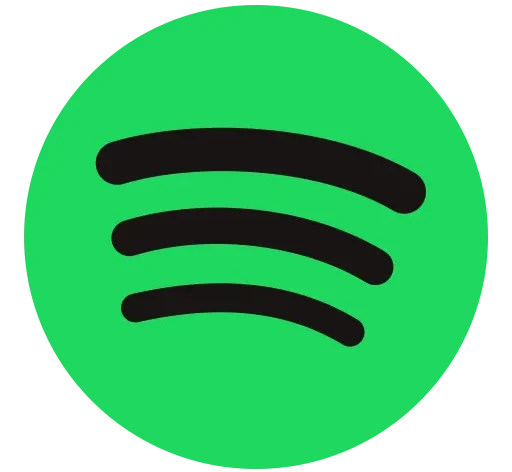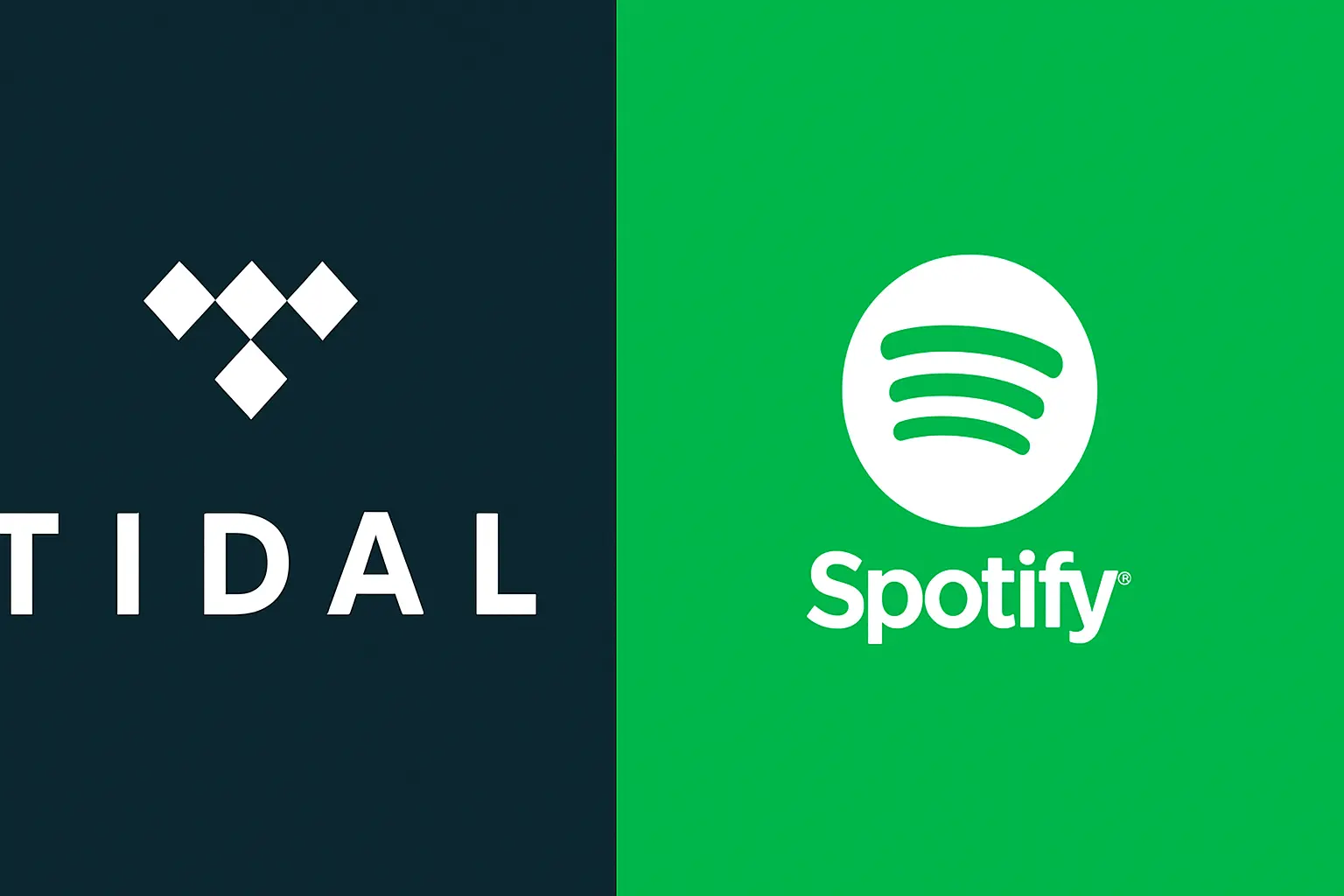When it comes to music streaming in 2025, Tidal vs Spotify is a common debate among audiophiles and casual listeners alike. Both platforms have evolved significantly over the years, offering unique features, different pricing, and tailored experiences.
Whether you’re chasing studio-quality sound or looking for budget-friendly streaming, choosing between these two music streaming platforms requires a deeper dive into what each service truly offers.
In this article, we break down Tidal vs Spotify in detail to help you decide which one suits your lifestyle and listening preferences best.
What Is Tidal and What Is Spotify?
When choosing the perfect music streaming service in 2025, two names consistently dominate the conversation: Tidal and Spotify.
While both platforms offer access to millions of songs and albums at your fingertips, they serve very different audiences with unique features, philosophies, and pricing models.
In this section, we break down exactly what Tidal and Spotify are, how they differ, and why the Tidal vs Spotify debate matters more than ever for today’s music lovers.
What Is Spotify?
Launched in 2008 in Sweden, Spotify is currently the largest music streaming platform in the world, with over 600 million monthly active users.
Key Features of Spotify:
- Freemium model: Includes a free tier with ads and limitations, and a paid Premium version.
- Offers over 100 million songs, podcasts, audiobooks, and live sessions.
- Known for its AI-driven playlists like Discover Weekly, Daily Mix, and Spotify Wrapped.
- Leading platform for podcasts, including exclusives and originals.
Spotify is built for casual listeners, playlist explorers, and social sharers. Its intelligent algorithm, expansive library, and engaging features make it a go-to choice for mainstream users.
What Is Tidal?
Tidal was launched in 2014 and is currently owned by Block, Inc. (formerly Square), with music artist Jay-Z previously playing a major role in its promotion.
Tidal presents itself as a premium music streaming platform built by artists, for true music enthusiasts and creators.
Its core focus lies in delivering superior audio quality, supporting artist ownership, and offering exclusive content that can’t be found elsewhere.
Key Features of Tidal:
- Offers HiFi lossless and HiRes audio formats (up to 24-bit, 192kHz).
- Built with audiophiles and music purists in mind.
- Pays higher royalties to artists—especially through the HiFi Plus plan.
- Provides exclusive releases, interviews, behind-the-scenes, and artist-curated content.
- Features rich metadata like song credits, contributors, producers, and detailed album notes.
Tidal vs Spotify: Key Differences
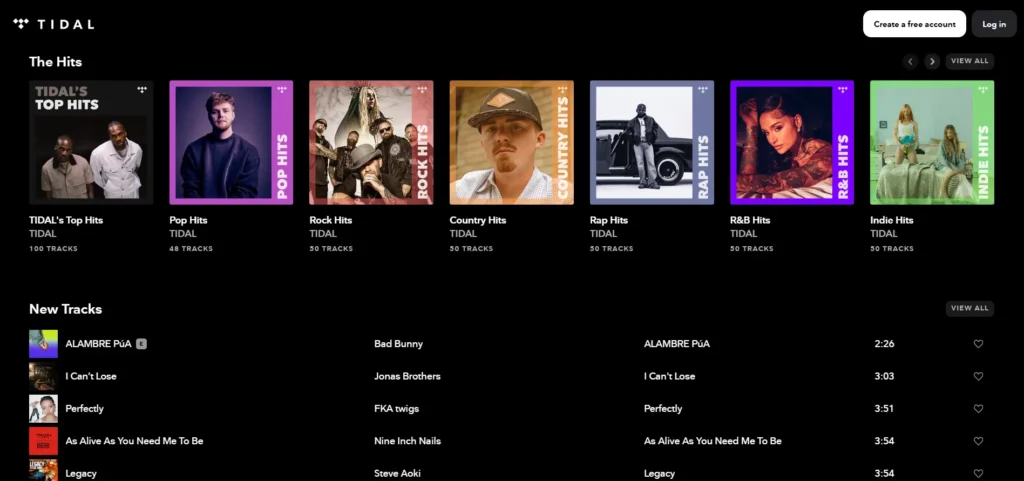
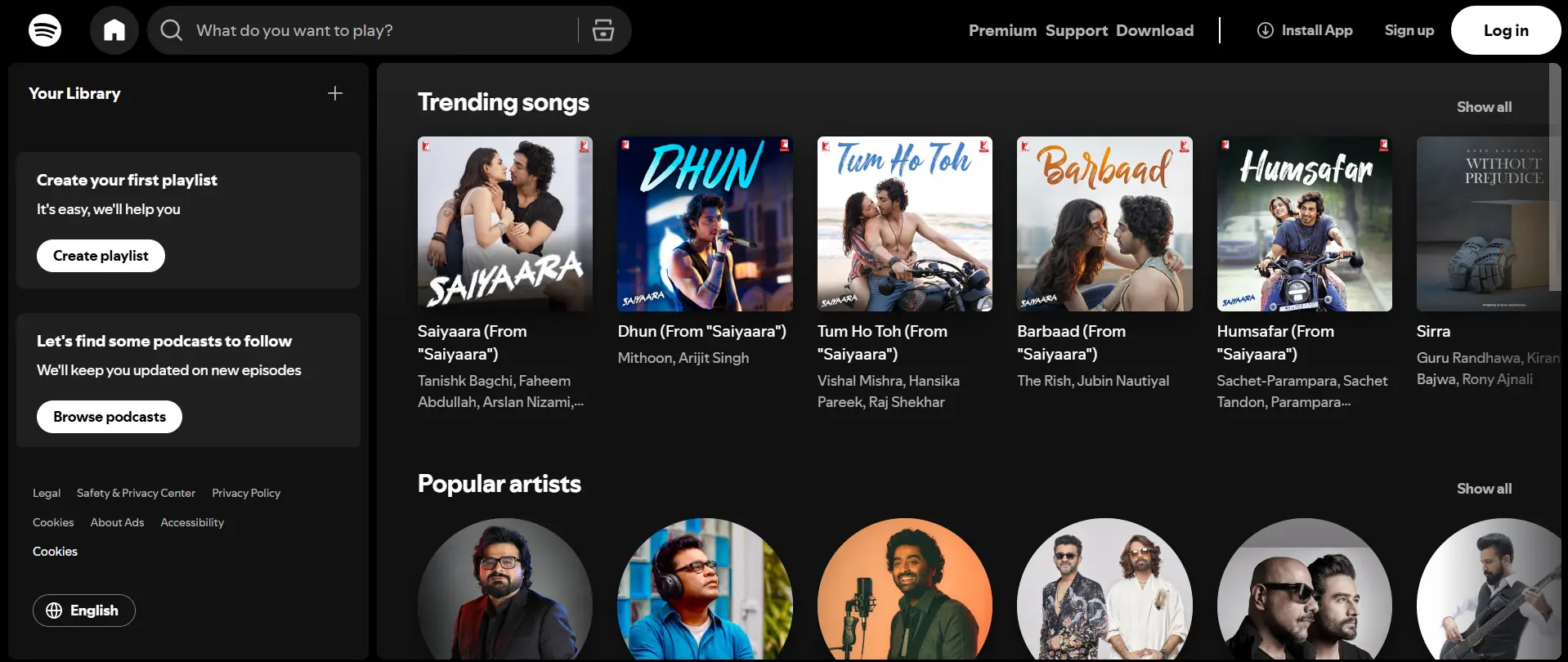
When comparing Tidal vs Spotify, it’s easy to assume they’re similar music streaming platforms—but the truth is, they cater to very different audiences.
While both services offer access to millions of songs, the way they deliver content, prioritize user experience, and compensate artists varies drastically.
Whether you’re a casual listener who enjoys playlists and podcasts, or an audiophile chasing high-fidelity sound, understanding the key differences between Tidal and Spotify is essential before making a decision in 2025.
Quick Overview of Major Differences
Here’s a snapshot comparison of Tidal vs Spotify to help you instantly see where they stand apart:
| Feature | Tidal | Spotify |
|---|---|---|
| Audio Quality | Lossless & HiRes (up to 9216kbps) | Compressed (max 320kbps, no HiFi globally yet) |
| Free Tier | No (only free previews or trials) | Yes (ad-supported, limited features) |
| Music Discovery | Human-curated playlists, fewer algorithmic feeds | Advanced AI-driven discovery & custom playlists |
| Podcasts & Audiobooks | Limited or none | Vast selection of podcasts & audiobooks |
| Artist Compensation | Higher payouts, direct artist payments (HiFi+) | Lower payout per stream |
| Exclusive Content | Early releases, artist interviews, live sessions | Rare exclusives, mostly mass-available content |
| Social Sharing | Minimal social features | Strong social features (Blends, Group Sessions) |
| Device Compatibility | Works on major devices, limited smart-home use | Works on all platforms including smart assistants |
| User Interface | Sleek, premium design, credit-rich metadata | Fast, user-friendly, and more interactive |
| Subscription Pricing | Higher, starts at $10.99, HiFi Plus at $19.99 | More flexible (Free, Premium, Family, Student) |
Tidal vs Spotify: A Deeper Breakdown
Let’s explore some of these differences in more detail:
1. Audio Fidelity and Streaming Quality
- Tidal wins in audio quality with its HiFi and HiRes tiers, supporting FLAC and MQA formats.
- Spotify still streams at compressed 320kbps, and although Spotify HiFi was announced, its global release remains uncertain.
2. Free Access Options
- Spotify’s free plan is a major win for users who don’t mind occasional ads and restrictions.
- Tidal, on the other hand, only offers short-term free trials—making it a premium-only service.
3. Music Discovery
- Spotify uses powerful machine learning and listening behavior to serve tailored recommendations.
- Tidal relies more on curated playlists by experts and artists, which appeals to listeners who prefer manual curation over algorithms.
4. Podcast & Audiobook Integration
- Spotify is far ahead in the podcast game with exclusive shows, Originals, and audiobook support.
- Tidal focuses strictly on music and music videos, making it ideal for purists who don’t want distractions.
5. Support for Artists
- Tidal’s HiFi Plus plan includes Fan-Centered Royalties, meaning your subscription directly supports your most-listened-to artists.
- Spotify offers wide exposure but pays less per stream, which has sparked criticism in the music industry.
Conclusion
- Spotify is perfect for mainstream users who want affordability, smart music discovery, podcasts, and a connected digital lifestyle.
- Tidal is the choice for music enthusiasts who care about sound integrity, artist royalties, and exclusive content.
No platform is objectively better—it all comes down to what you value most in your music streaming experience.
Tidal vs Spotify Sound Quality
One of the most crucial aspects in the Tidal vs Spotify comparison is sound quality.
While most casual listeners stream music without thinking much about bitrates or file formats, true music lovers and audiophiles know that sound quality can make or break the listening experience.
Understanding the difference between lossless and compressed audio will help you decide whether Tidal or Spotify aligns better with your audio expectations in 2025.
What Is Compressed Audio?
Compressed audio is music that has been processed to reduce its file size. This is often done using lossy compression formats like MP3, AAC, or Ogg Vorbis, which remove some audio data deemed “unnecessary” to human ears.
Key Features of Compressed Audio (Used by Spotify):
- Lower file size = faster streaming, less data usage.
- Slight loss of sound detail—especially in the highs and lows.
- Best suited for mobile listeners and casual headphones.
- Spotify streams up to 320kbps using the Ogg Vorbis codec on Premium accounts.
While this quality is sufficient for many users, trained ears or high-end equipment users can detect artifacts like muddiness or flatness in compressed tracks.
What Is Lossless Audio?
Lossless audio preserves all the original data from the music source. These formats—like FLAC (Free Lossless Audio Codec) or MQA (Master Quality Authenticated)—offer rich, deep, and highly detailed sound, closer to studio quality.
Key Features of Lossless Audio (Used by Tidal):
- No compression loss = studio-grade clarity.
- Tidal HiFi streams in FLAC (CD quality, 16-bit/44.1kHz).
- Tidal HiFi Plus delivers HiRes audio via MQA (up to 24-bit/192kHz).
- Best experienced with wired headphones, DACs, or high-end audio gear.
Tidal vs Spotify: Audio Quality Levels Compared
| Feature | Tidal HiFi / HiFi Plus | Spotify Premium |
|---|---|---|
| Max Bitrate | Up to 9216kbps (HiRes/MQA) | Up to 320kbps (Ogg Vorbis) |
| Formats | FLAC, MQA | Ogg Vorbis |
| Offline Quality | Selectable: Normal to Master | Selectable: Low to Very High |
| Audiophile-grade Listening | Fully supported | Not ideal for critical listening |
| Lossless Support | Yes (CD and HiRes quality) | No (as of 2025, Spotify HiFi pending) |
Why Audio Quality Matters in 2025
With internet speeds increasing and smartphones becoming more powerful, users in 2025 are more equipped than ever to handle high-fidelity music streaming.
The rise of wireless DACs, audiophile headphones, and spatial audio, and the demand for lossless quality is growing rapidly.
In the Tidal vs Spotify debate, sound quality is a clear dividing line:
- Tidal leads in technical audio excellence.
- Spotify leads in convenient, data-friendly streaming.
If you’re someone who believes that music should be heard as the artist intended, Tidal’s lossless and master-quality audio is unmatched.
But if you’re more of a background music listener or podcast fan, Spotify offers a perfect blend of quality and convenience.
Which Platform Has the Better Music Library?
In the ongoing Tidal vs Spotify comparison, one of the most commonly asked questions is: Which platform has the better music library?
While both streaming services claim access to over 100 million tracks, the depth, diversity, and discoverability of those tracks can vary greatly depending on the platform.
Choosing a music streaming service isn’t just about numbers—it’s about what you can find, how you find it, and the quality of content you get.
Music Library: Numbers Don’t Tell the Whole Story
| Feature | Spotify | Tidal |
|---|---|---|
| Total Songs | 100+ million | 100+ million |
| Music Videos | No | Yes – Thousands of official videos |
| Podcasts | Yes – Extensive collection | Limited or none |
| Audiobooks | Yes (select countries) | Not available |
| Exclusive Releases | Rare | Artist exclusives, early access |
| Metadata Richness | Moderate | Rich – Full credits, composer info |
| Editorial Playlists | AI + Human Curated | Mostly Human Curated |
Both music streaming platforms offers extensive libraries, but the user experience and content type differ.
Spotify’s Music Library
Spotify’s library is built around music discovery, podcasts, and audio content variety.
With more than 100 million tracks and an ever-expanding collection of podcasts and audiobooks, it’s the top choice for users who enjoy exploring content beyond music.
Strengths of Spotify’s Library:
- Smart and AI-curated playlists like Discover Weekly and Daily Mixes.
- Huge selection of exclusive and original podcasts.
- Audiobooks added in select markets like the U.S. and UK.
- Global reach with popular tracks across all languages and genres.
- Integration with social sharing, perfect for group listening.
Spotify’s algorithm doesn’t just give you access—it guides you to music you didn’t even know you’d love.
Tidal’s Music Library
Tidal’s library also boasts 100+ million songs, but the focus is more artist-driven and quality-focused. The platform prioritizes lossless music, full album experiences, and exclusive artist content.
Strengths of Tidal’s Library:
- Music videos, live performances, and documentaries.
- Master-quality recordings and exclusive remasters.
- Editorially curated content by musicians, not just algorithms.
- Rich metadata including album credits, engineers, writers, and contributors.
- Unique “Master” tracks for HiFi Plus users.
If you’re someone who enjoys immersing yourself in the artistry behind the music—not just the sound—Tidal’s depth of content delivers a premium experience.
When evaluating Tidal vs Spotify in terms of music library, the answer depends on what you’re looking for:
- Choose Spotify if you want:
- A mix of music, podcasts, and audiobooks
- Smart recommendations that evolve with your taste
- Access to global viral trends and social sharing features
- Choose Tidal if you want:
- Studio-quality sound and exclusive album drops
- Music videos and behind-the-scenes footage
- Full song credits and artist-first experiences
Tidal vs Spotify: User Interface & App Experience
When comparing Tidal vs Spotify, the user interface (UI) and overall app experience play a major role in daily usability. After all, it doesn’t matter how many songs you can stream if navigating the platform feels frustrating or clunky.
In this section, we break down how both Tidal and Spotify perform in terms of design, accessibility, speed, personalization, and cross-platform usability—all of which impact your day-to-day experience.
Tidal: Sleek, Minimal, and Premium
Tidal is known for its clean, minimalist design that prioritizes high-quality visuals, rich metadata, and a premium feel. The app interface is ideal for music lovers who enjoy an elegant, focused browsing experience without distractions.
Highlights of Tidal’s User Interface:
- Dark-themed aesthetic that’s easy on the eyes.
- Organized tabs: Home, Explore, My Collection, Videos.
- Full album credits including producers, composers, and lyricists.
- Integrated music video player with smooth playback.
- Manual search with accurate, detailed results.
- Less clutter, fewer promotional pop-ups or ads.
Tidal’s UI is clearly built for audiophiles and detail-focused users. It’s not flashy—but it’s classy.
Spotify: Smart, Intuitive, and Social
Spotify’s interface is built around intuitive design, smart content discovery, and social features. It’s optimized for casual listeners who want fast access to music, podcasts, and playlists without any learning curve.
Highlights of Spotify’s App Experience:
- Fast-loading interface with smooth animations.
- Personalized Home screen based on your recent activity.
- Endless scroll recommendations like Made for You and Recently Played.
- Social features: Share to stories, follow friends, create collaborative playlists.
- Seamless transition between mobile, desktop, mac, web, and smart devices.
- Features like Crossfade, Car View, and Sleep Timer.
Spotify has mastered the art of making music discovery and navigation feel natural, even for first-time users.
Tidal vs Spotify: UI & UX Comparison Table
| Feature | Tidal | Spotify |
|---|---|---|
| Theme & Layout | Sleek, minimalist, dark | Modern, colorful, intuitive |
| Speed & Responsiveness | Smooth but slightly slower | Lightning-fast performance |
| Personalization | Manual curation, artist-focused | AI-powered recommendations |
| Search Experience | Clean, precise | Smart search with autosuggestions |
| Social Integration | Very limited | Strong: Blend, Group Session, Story sharing |
| Cross-Platform Consistency | Good | Excellent across all devices |
| Music Video Integration | Built-in video player | Not available |
| Ease of Navigation | Great for focused listening | Great for fast exploration |
Tidal vs Spotify: Price & Subscription Value
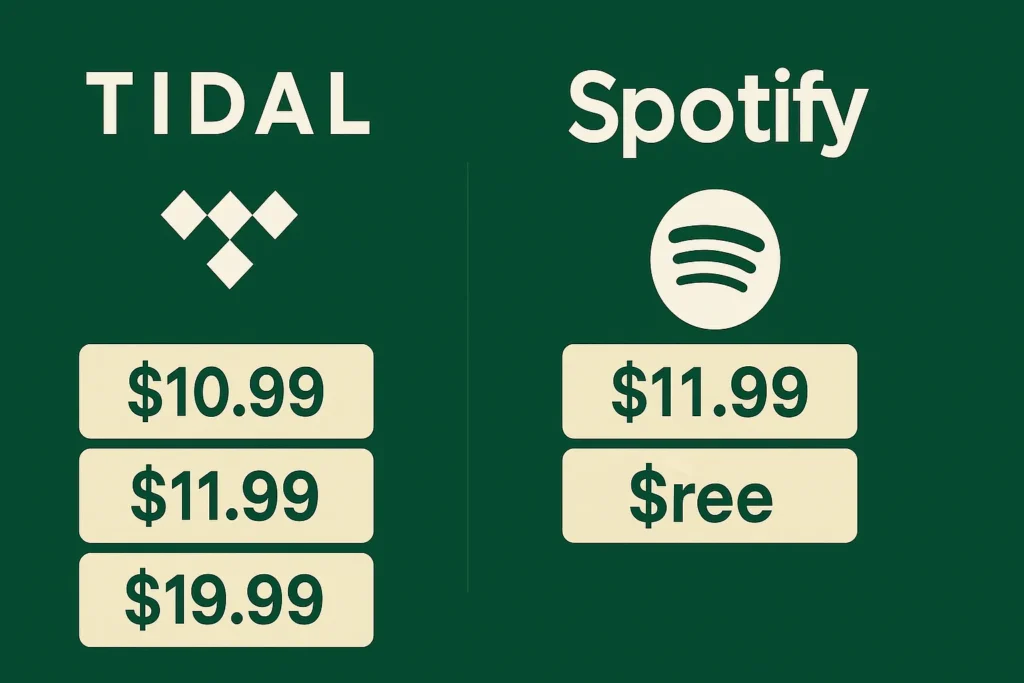
When choosing between Tidal vs Spotify, pricing is a critical factor—especially if you’re deciding between free vs paid streaming or trying to get the best value for your money.
Both platforms offer a range of subscription tiers to cater to students, families, audiophiles, and casual listeners.
This section breaks down the subscription plans, cost differences, and value-added features so you can make an informed decision based on your listening habits and budget.
Spotify Pricing Plans (2025)
Spotify offers flexible pricing with both free and premium plans that are accessible to a wide audience. Here’s a look at what each plan includes:
Spotify Free (Ad-Supported)
- Price: $0/month
- Ads: Yes
- Offline Listening: No
- Skip Limit: 6 skips/hour
- Audio Quality: Up to 160 kbps
- Other Perks: Access to all playlists and podcasts with boring ads
Spotify Premium Plans
- Individual – $10.99/month (No ads, offline downloads, 320 kbps streaming & More)
- Duo – $14.99/month (Two separate accounts for couples or roommates)
- Family – $16.99/month (Six premium accounts + parental controls + Spotify Kids)
- Student – $5.99/month (Includes Hulu (limited ads) and Showtime (U.S. only)
Tidal Pricing Plans (2025)
Tidal markets itself as a high-fidelity music streaming platform, so its pricing tiers reflect the value of audio quality and artist support.
Tidal Free (Ad-Supported)
- Unique Feature: Still offers credit info & artist royalties
- Price: $0/month
- Ads: Yes
- Offline Listening: No
- Audio Quality: Up to 160 kbps
Tidal Premium Plans
- HiFi – $10.99/month
- HiFi Plus – $19.99/month (Master-quality audio, Dolby Atmos, Sony 360 Reality Audio & Up to 10% of subscription goes directly to artists you stream most)
- Family Plan (HiFi) – $16.99/month (6 accounts)
- Student Plan – $4.99/month for (HiFi) or $9.99/month for (HiFi Plus)
Tidal Value Highlights:
- Master Audio files (MQA) for lossless playback
- Artist-first model: More direct royalties to musicians
- Detailed credits, lyrics, videos, and studio-quality sound
Which Streaming Platform Offers Better Subscription Value?
If you’re someone who listens casually, values smart playlists, podcasts, and social sharing, Spotify Premium is a great all-rounder. It also gives you added perks like audiobooks and Hulu integration (for U.S. students).
On the other hand, if you’re an audiophile who cares deeply about studio-quality audio and directly supporting artists, Tidal HiFi Plus offers unmatched value—even though it’s slightly more expensive.
Key Takeaways for Budget-Conscious Listeners
- Choose Spotify if you want a flexible, feature-rich, and affordable streaming option with lots of discovery features.
- Choose Tidal if you’re investing in high-fidelity headphones or a home audio setup and want superior sound.
Offline Listening & Device Compatibility
In the world of music streaming, offline access and cross-device support are no longer just “bonus features”—they’re essential.
Whether you’re flying, commuting, or simply conserving mobile data, offline listening ensures uninterrupted playback. Meanwhile, device compatibility determines how seamlessly you can switch between your phone, tablet, smart TV, car, or speakers.
This section of the Tidal vs Spotify comparison breaks down how each platform handles offline playback and which one wins in the battle for device flexibility and ecosystem integration.
Offline Listening: Music Without the Internet
Both Tidal and Spotify offer offline download capabilities—but only for paid subscribers.
Spotify Offline Features:
1. Available for Premium users only.
2. You can Download up to 10,000 songs on up to 5 different devices.
3. Download playlists, albums, and podcasts.
4. Offline mode activates automatically when there’s no internet.
Tidal Offline Features:
1. Only available at HiFi and HiFi Plus subscribers.
2. Download tracks with lossless quality intact.
3. Supports offline music videos (not just audio).
4. Offline feature works on both Android and iOS mobile apps.
Device Compatibility: Where Can You Listen?
A great streaming service isn’t just about what’s on your phone—it’s about how easily you can access your music across all your devices.
Spotify Device Compatibility:
- iOS, Android, Windows, Mac, Linux
- Web player (browser-based streaming)Smart TVs: LG, Samsung, Android TV, Roku
- Wearables: Apple Watch, Galaxy Watch, Fitbit
- Game consoles: PlayStation, Xbox
- Car systems: Android Auto, Apple CarPlay
- Smart speakers: Google Nest, Amazon Echo, Sonos
- Chromecast & Spotify Connect (control from one device to another)
Spotify is the clear leader in device ecosystem compatibility, with seamless transitions between platforms and deep integration into smart home setups.
Tidal Device Compatibility:
- iOS, Android, Windows, Mac
- Web player with HiFi streaming
- Smart TVs: Android TV, Apple TV, Amazon Fire TV
- Wearables: Limited (mostly mobile-focused)
- Car systems: Android Auto, Apple CarPlay
- Select HiFi audio systems: Bluesound, Roon, Cambridge Audio
- Chromecast & AirPlay 2 support
Tidal supports most major platforms, but it focuses more on high-end audio gear and less on social/connected devices like game consoles or wearables.
In the Tidal vs Spotify battle for offline listening and device support:
- Spotify wins in terms of cross-platform access, smart home integration, and ease of use across ecosystems.
- Tidal wins in offline audio quality and is better suited for audiophile setups.
Tidal vs Spotify: Best for Audiophiles?
When it comes to audiophile-grade streaming, the battle of Tidal vs Spotify isn’t just about song libraries or playlists—it’s about audio fidelity, bitrate, and lossless formats.
For listeners who care deeply about hearing every note, nuance, and natural decay of sound, the choice between these two platforms can make a real difference.
Let’s dive into how each platform serves audiophiles, those who demand the highest-quality sound reproduction and are equipped with premium headphones, DACs, or studio monitors.
Audio Quality Comparison: Lossless vs Compressed
| Tier | Tidal | Spotify |
|---|---|---|
| Free | No (paid only) | Up to 160 kbps (AAC/OGG) |
| Standard | HiFi: 1,411 kbps (FLAC, CD quality) | Premium: Up to 320 kbps (OGG Vorbis) |
| High-Res | Tidal HiFi Plus: Up to 9,216 kbps (MQA, Dolby Atmos, 360 Reality Audio) | Not available yet (Spotify HiFi is delayed) |
Tidal for Audiophiles: | Spotify for Audiophiles: |
|---|---|
CD-quality FLAC files (16-bit/44.1 kHz) with HiFi plan | Spotify Maxes out at 320 kbps using OGG Vorbis (still lossy compression). |
Hi-Res Master Tracks using MQA (24-bit/96 kHz and higher). | No official lossless streaming tier available as of 2025. |
Tidal uses Immersive sound formats like Dolby Atmos & Sony 360 Reality Audio. | Suitable for casual listeners and mainstream users, not purists. |
Exclusive artist-curated tracks with studio-level mastering. | Spotify HiFi, announced in 2021, is still unreleased. |
FAQ’s
Q1. Which service offers better audio quality: Tidal or Spotify?
Q2. Does Tidal really pay artists more than Spotify?
Users frequently ask whether Tidal’s artist-centric payment model truly results in higher royalties compared to Spotify.
Q3. How much does each service cost?
Cost comparisons are popular—pricing differences, family/student plans, and which service offers more value in the Tidal vs Spotify showdown.
Q4. Is Spotify HiFi better than Tidal HiFi?
With Spotify’s announcement of a HiFi tier, users wonder how it measures against Tidal’s existing lossless, hi-res service
Q5. Which platform has better playlists and music discovery?
Queries like “Discover Weekly vs Tidal’s My Mix” are common, as users compare Spotify’s algorithm with Tidal’s human-curated lists.
Q6. Is Spotify’s user interface better than Tidal’s?
Questions arise about ux, speed, simplicity, and social features—for example, collaborative playlists and group listening
Final Verdict
When comparing Tidal vs Spotify, your ideal choice ultimately depends on your priorities as a music listener—whether it’s audio quality, catalog depth, personalization, or pricing flexibility.
Let’s summarize the key takeaways:
Tidal is Best For: | Spotify is Best For: |
|---|---|
Audiophiles who demand lossless and hi-res audio | Everyday listeners who value personalized playlists and algorithm-driven discovery |
Music lovers who appreciate immersive formats like Dolby Atmos & 360 Reality Audio | Users looking for affordable, family-friendly, or student plans |
Fans who want exclusive artist content, better payouts to musicians | Those who enjoy a smoother app experience and social sharing features |
Users with premium & high end audio gear (DACs, studio headphones, HiFi systems) | People who want cross-platform integration with smart devices, gaming consoles, and more |
